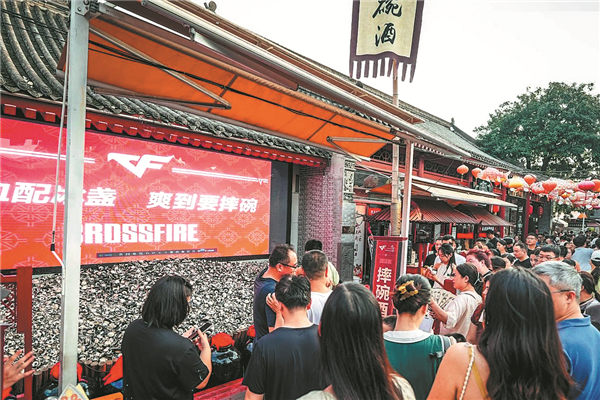

Interactive experiences in city incorporating elements of its culture are latest in digital IP's experiments with immersion, Yang Feiyue reports.
Bai Xudong enjoyed the best of both worlds during his summer trip to Xi'an, capital of Shaanxi province, early last month.
The video game enthusiast from Shandong province found elements from his beloved game CrossFire, featuring a series of tactical first-person shooters, at major scenic spots in the city.
Besides the city's ancient history, the man in his 20s was impressed by a voice-activated "ice screen" device in front of the Giant Wild Goose Pagoda, a monument to Buddhist culture and architecture originally built during the Tang Dynasty (618-907).
The screen looked like clear glass, but when activated, it displayed an image of the pagoda that overlapped with the actual pagoda in the distance, creating a layered visual effect.
"When you shout 'summon the dragon', animations appear layer by layer, 'lighting up' the digital pagoda. The louder you shout, the more layers light up," Bai says.
"Each time a layer is lit, a character appears and interacts with the screen and the pagoda behind it. Eventually, you get a dragon spiraling upward, which matches the city's vibe perfectly," he adds.
The screen was part of a series of immersive experiences launched by CrossFire's publisher for the Chinese mainland, Tencent, and Xi'an authorities.
Game elements have been added to an urban cultural route in Xi'an that includes its ancient city wall, Datang Everbright City, which is known for its Tang Dynasty architectural elements, and Yongxingfang, a cultural and shopping complex that hosts a cluster of intangible cultural heritage items, such as shadow puppetry, and gourmet food outlets.
Bai really likes that the bravery and determination of the city's Qin Dynasty (221-206 BC) soldiers is finding digital expression, as he feels it allows more young people to engage with and appreciate history and culture.